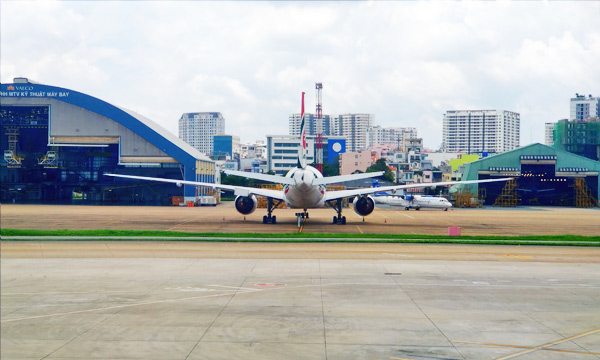MRO Asia-Pacific: What perspectives are there for the maintenance sector in Vietnam? |
| Romain Guillot |
|
|
02 OCT 2019 | 504 words
|
 |
© Le Journal de l'Aviation - All rights reserved |
|
|
|
With over 106 million passengers and nearly 13% growth in 2018, Vietnamese air transport is now one of the most dynamic in Asia, driven by an economy which is constantly striving to develop and which can only be boosted by the increasing number of trade barriers established by the Trump administration in relation to its major neighbour to the north. One other source of potential growth is the free trade agreement between the EU and Vietnam which was ratified in June and plans to practically eliminate all customs duty between the two parties within 10 years.
Vietnam Airlines is continuing its growth, in particular for long-haul, with the highly probable opening of direct routes to the United States, following the recent authorisation from the American authorities. Its Jetstar Pacific subsidiary is managing to resist the sudden emergence of VietJet, the private airline which now has nearly 70 A320s/A320neos and has over 300 aircraft on order from Airbus and Boeing. The young Bamboo Airways, which was launched in January, is already operating with around ten Airbus single-aisle aircraft while it waits for its widebodies which are coming soon. Finally, the Vingroup conglomerate will be launching Vinpearl Air next summer, a new airline whose ambition is to operate with around thirty Airbus narrowbodies within 5 years.
Of course, in this context, the perspectives for the MRO sector in Vietnam appear particularly promising, and yet everything is still to be done. The country's MRO capabilities are almost exclusively concentrated around the activities of Vietnam Airlines Engineering Company (VAECO). The national airline's Engineering subsidiary has two major long-standing maintenance centres in Hanoi (Nobai) and Ho Chi Minh City (Tan Son Nhat) with total capacity of six heavy maintenance hangars for widebody and norrowbody planes.
Traditionally, VAECO's facilities in Hanoi have been more geared towards its Airbus fleet (A320, A330 and now A350) while its Ho Chi Minh City facilities were mainly dedicated to heavy maintenance for its Boeings, even if things are now much less segmented, with a very clear trend in favour of developing MRO activities in the capital today. But the Vietnam Airlines facilities are not even calibrated for its own requirements and the airline still makes much use of several foreign MRO companies across Asia and even beyond.
The deficit in maintenance capacity in Vietnam is clearly sharpening the appetites of major worldwide companies, such as Lufthansa Technik which has already demonstrated an interest in setting up in the country next year and has reached out to VAECO for a possible partnership. The German maintenance giant is already present in Manilla (airframe maintenance) and Shenzhen (component and part repair). But for now it is Singapore's ST Engineering which has made the first move over the last few months with the creation of JV with VAECO called Vietnam Singapore Technologies Engineering Aerospace and which will be dedicated to component maintenance for ATRs, A320s and 787s. Remember that Jetstar Pacific is a regular customer of ST Engineering's hangars.
|
|
 |
Romain Guillot
Chief editor
Cofounder of Journal de l'Aviation and Alertavia
|
|
| |
They made this section possible |
|
|
|
|
|
|
|
|
|
|
|
|
|
|
|
|
Top stories |
|
|
|
|
|
Top stories
|